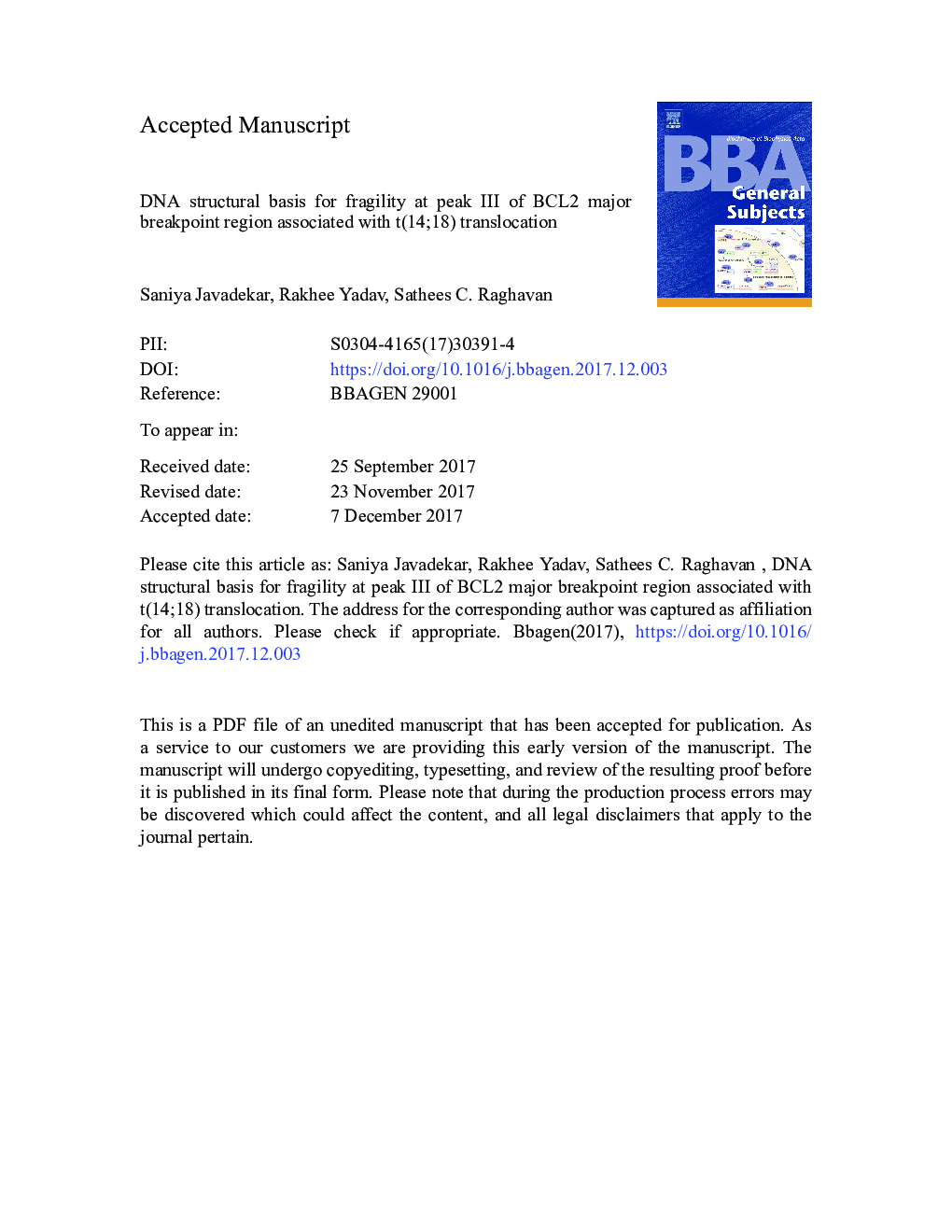| Article ID | Journal | Published Year | Pages | File Type |
|---|---|---|---|---|
| 8300919 | Biochimica et Biophysica Acta (BBA) - General Subjects | 2018 | 33 Pages |
Abstract
Maintaining genome integrity is crucial for normal cellular functions. DNA double-strand breaks (DSBs), when unrepaired, can potentiate chromosomal translocations. t(14;18) translocation involving BCL2 gene on chromosome 18 and IgH loci at chromosome 14, could lead to follicular lymphoma. Molecular basis for fragility of translocation breakpoint regions is an active area of investigation. Previously, formation of non-B DNA structures like G-quadruplex, triplex, B/A transition were investigated at peak I of BCL2 major breakpoint region (MBR); however, it is less understood at peak III. In vitro gel shift assays show faster mobility for MBR peak III sequences, unlike controls. CD studies of peak III sequences reveal a spectral pattern different from B-DNA. Although complementary C-rich stretches exhibit single-strandedness, corresponding guanine-rich sequences do not show DMS protection, ruling out G-quadruplex and triplex DNA. Extrachromosomal assay indicates that peak III halts transcription, unlike its mutated version. Taken together, multiple lines of evidence suggest formation of potential cruciform DNA structure at MBR peak III, which was also supported by in silico studies. Thus, our study reveals formation of non-B DNA structure which could be a basis for fragility at BCL2 breakpoint regions, eventually leading to chromosomal translocations.
Keywords
Related Topics
Life Sciences
Biochemistry, Genetics and Molecular Biology
Biochemistry
Authors
Saniya M. Javadekar, Rakhee Yadav, Sathees C. Raghavan,
